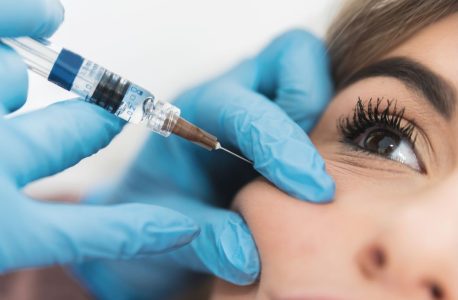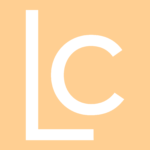What is Intimate Whitening?
Intimate whitening, also known as vaginal whitening or genital whitening, is an aesthetic gynecology procedure that has gained a lot of popularity in recent years.
This technique aims to improve the aesthetic appearance of the genital areas, specifically treating the darkening of the skin that can occur due to various factors such as hormonal changes, aging, friction or even genetic issues.
The demand for whitening of the private parts reflects a growing interest in aesthetic care; care that helps improve self-esteem and promotes a more harmonious and confident relationship with one’s own body.
Intimate whitening can be carried out using different methods, including the CO2 laser, which stands out for being an advanced technology that offers very precise and safe results.
This method uses the laser to gently renew the outer layer of the skin, promoting cell regeneration and, consequently, a more even and rejuvenated skin tone in the treated areas.
Unlike some topical treatments, which often offer limited results, CO2 laser whitening provides a deeper and more effective approach, making it an increasingly sought-after solution for those wishing to whiten the intimate region safely and effectively.
What are the causes of darkening of the private parts?
Darkening of the private parts is a common phenomenon that can affect both men and women, and it is important to understand its causes so that you can find the most appropriate treatment. Several factors can contribute to this change in skin pigmentation, including:
Hormonal changes
Hormonal changes, such as those that occur during pregnancy, menopause or due to the use of contraceptives, can affect the pigmentation of the skin in intimate areas.
This is mainly due to the influence of hormones on the production of melanin, the pigment that gives skin its color.
Genetics
Genetic predisposition plays a significant role in skin coloration, including the genital areas. Some people may have a greater tendency to develop hyperpigmentation (darkening of the skin) in certain areas of the body due to genetic inheritance.
Age
As we get older, various changes occur in the skin, including changes in pigmentation. In the intimate area, these changes are influenced by factors such as the natural decrease in hormones, the loss of collagen and elastin, and changes in the texture and integrity of the skin.
Friction and irritation
As mentioned earlier, constant friction caused by tight clothing or physical activity can lead to darkening of the intimate area.
Hygiene Habits and Chemicals
Excessive use of certain hygiene or hair removal products can irritate the skin, contributing to darkening.
Health conditions
Some health conditions, such as diabetes or obesity, can be associated with increased pigmentation in the intimate area.
What is the Intimate CO2 Laser and how does it work?
The intimate CO2 laser, an innovative technology in the field of dermatology and gynecology, has established itself as an effective method for lightening the intimate area. This procedure uses a carbon dioxide laser to gently treat hyperpigmentation and improve skin texture in the intimate areas.
How it works
The CO2 laser emits a highly concentrated beam of light, which is absorbed by the skin cells, especially those with darker pigmentation, effectively removing the upper layers of the skin in a controlled manner.
By removing the outer layers of skin, the CO2 laser stimulates cell regeneration. This process promotes the growth of a new, lighter and more textured layer of skin, replacing the darker, damaged skin.
Main advantages of the CO2 laser for intimate whitening
One of the main advantages of the CO2 laser is its precision, allowing the treatment to be adapted to the specific needs of each patient. In addition, it is a safe procedure when performed by a qualified doctor (as in the case of Living Clinic), with minimized risks and a relatively short recovery time.
Expected results
The results of intimate whitening with a CO2 laser can be seen gradually, depending on the regeneration of the skin. More than 1 session may be needed to achieve the desired results, depending on the extent of the hyperpigmentation and the individual characteristics of the skin.
Genital whitening with CO2 laser represents a modern and efficient solution for those looking to improve the aesthetic appearance of their intimate areas. This procedure offers not only an improvement in color, but also in intimate texture and sagging, promoting total intimate rejuvenation.
Alternative intimate lighteners
In addition to the advanced CO2 laser intimate whitening method, there are other options available for those looking to improve the appearance of their intimate areas. These alternatives vary in effectiveness, method of application and expected results. Here, we’ll explore some of the popular options:
Whitening Creams and Lotions: There are a variety of whitening creams and lotions available on the market. These products contain active ingredients that aim to reduce pigmentation, such as kojic acid, azelaic acid, niacinamide, among others. It is crucial to choose products specifically formulated for intimate use, taking into account the sensitivity of the area. Compared to CO2 laser, the results of whitening creams tend to be much more gradual, so it will take several months to see any change in pigmentation.
Chemical Peels: Chemical peels, when applied by experienced professionals, can help lighten the skin in intimate areas. These treatments use acid solutions to remove the upper layers of the skin, promoting regeneration and, consequently, a more even skin tone. However, they can cause scabbing, intense inflammation (pain, redness and burning), risk of local infection and contact dermatitis. The results and possible complications are influenced not only by the depth of action of the product used, but also by the choice or incorrect application of the peeling agent.
On the other hand, the CO2 laser has a more precise, localized action, and its intensity can even be regulated according to the patient and the treatment site in question.
Natural treatments: Some prefer more natural approaches, such as the use of aloe vera or coconut oil. Although these methods are gentler, it is important to note that the results can be significantly more subtle and time-consuming compared to clinical alternatives such as the CO2 laser.
Is the genital whitening procedure safe?
When it comes to genital whitening, whether through methods such as the CO2 laser or topical alternatives, safety is of paramount importance. This area of the body is particularly sensitive, and the approach chosen must be done with care and knowledge.
Before embarking on any form of genital whitening, it is crucial to consult your gynecologist. The doctor will assess your specific condition, discuss different treatment options and help set realistic expectations.
Each person has unique skin characteristics, and the intimate area is no exception. A professional assessment can determine the suitability of a specific treatment, taking into account factors such as skin type, the extent of pigmentation and the presence of underlying conditions.
Who performs the intimate whitening treatment at Living Clinic?
The CO2 laser intimate whitening treatment is performed by one of Living Clinic’s gynecologists. Both Dr. Manuela Montalvão Machado and Dr. Maria Manuel Sampaio are gynecologists with in-depth knowledge, competence and experience in this type of treatment.
Book an appointment
If you want to lighten your intimate area, book an appointment with one of Living Clinic’s gynecologists so that you can clarify all your doubts and receive a personalized treatment plan.
Responsible for the treatments

Dr. Manuela Montalvão is a specialist in Gynaecology/Obstetrics, with extensive training in different areas of the specialty, including Regenerative Gynaecology (Gynaeco-aesthetics), vulvar and vaginal laser application and intimate rejuvenation.

Dr. Maria Manuel Sampaio is a specialist in Gynecology/Obstetrics at the Living Clinic and has been dedicated since 2015 to monitoring women from adolescence to menopause, including pregnancy and childbirth.
One of her main areas of intervention is Intimate Rejuvenation, aimed at improving the quality of life of women during the menopause, postpartum and beyond, through techniques aimed at improving elasticity, tone and lubrication by activating collagen production.
Schedule an Appointment
- Are you looking for more information about a specific treatment?
- Would you like to learn more about Living Clinic?
- Would you like to receive the opinion of our specialists?
- Are you interested in scheduling a consultation?






